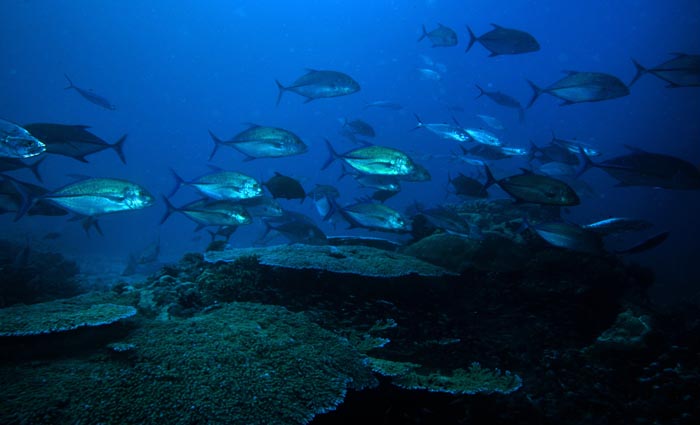- Home
- Accommodation
- Activities
- Area Info
- Maps
- Photo Galleries
- Real Estate
- Travel
Blue Spotted Jacks, Montezuma
The blue-spotted jack in the waters of Montezuma is considered a predator to be wary of, despite its moderate size. The fish is considered one of the marine fish of the family of Cardingae. When the blue spotted jack reaches one year of age, it is supposed to have reached sexual maturity. Spring is the time these fish target the most for spawning more of their young. It occurs year round usually but the blue spotted jacks prefer mating in the spring season. These fish are not commercially successful and are often thrown back into the ocean if caught by fishermen. This is a disappointment for the fishermen but very good news for the fish as this is exactly what saves them from being extinct. It is a well known fact that fishermen mercilessly catch fish whose meat is tender and delicious; no matter that the certain fish is going extinct. In that respect, the life line of the blue spotted jacks is safe and prolonged. These fish, also called the blue spotted trevally are usually only used for bait to catch other fish whose meat is preferred on dinner tables and in different restaurants all over the world.
The blue spotted jack is counted within the genus named Caranx. This group basically symbolizes all jacks and trevallies present in seas and oceans. Montezuma is famous for being home to a number of fish belonging to the Caranx fish family. The mackerel and horse fish family called Caraingdae hosts the Caranx as a sub branch of its huge family. The blue spotted jack is scientifically named Caranx bucculentus which in Latin translates to ‘with full cheeks’. This name was given because of two main reasons. First, the body of the fish is covered with blue spots on the upper area. The second reason is that the mouth of the blue spotted jack always remains wide open which gives the impression of it having a bigger face and mouth than it actually does. For this reason, it is also colloquially called the wide mouthed trevally or the wide mouthed jack. The fish is moderate sized with a slight leaning towards larger fish bodies. It can grow to a length of about 60 – 70 cm. The body shape of the blue spotted jack is relatively similar to other fish belonging to the same genus (Caranx). The blue spotted jack appears to be compressed into an oblong or oval form with its dorsal side more convex as compared to its ventral profile. The dorsal fin of the blue spotted jack is divided into two main sections. The first section has eight spines while the second section possesses a single spine and about 10 soft rays. The blue spotted jack is olive green in color from the upper side and the lower side of the fish is colored in a silvery white shade. The adult form of the blue spotted fish has many dark blue spots on its upper body while the babies do not develop the spots until they are fully grown. The upper end of the upercle has a large spot which is very dark in color.
Reference
California Academy of Sciences: Ichthyology (February 2009). “Caranx bucculentus“.Catalog of Fishes. CAS.
Froese, Rainer, and Daniel Pauly, eds. (2009). “Caranx bucculentus“ in FishBase
Great Stuff

Clandestina Restaurant
My new favorite restaurant, Clandestina is not to be missed by food lovers staying anywhere near to Montezuma. Established in March 2015, Clandestina is the new kid on the block. The Oregon/Tico collaboration is a winner among locals and travelers alike, with artisan craft beers, made onsite by Butterfly Brewing Co. and delicious, exciting […]












